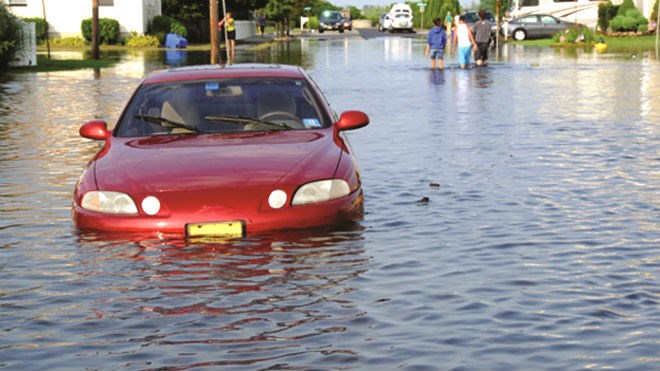Be prepared. It's the Scouting motto, but it's also good common sense, especially when it comes to natural disaster.
You just never know when one will strike — that's the nature of disasters: You can't plan for them, but you can prepare for them.
May 3-9 is Emergency Preparedness Week in Canada. It's the 20th year Canadians have been set aside an entire week to think about what they would do in the event of major tragedy.
Fortunately, St. John Ambulance has provided NorthernLife.ca with its top six tips to keep you and your family (and even your pets) safe when disaster happens.
1) Know the Risks. It is important to know what weather events, utility loss or potential industrial hazards (train derailments, chemical fires, etc.) pose a risk to you and your home, and plan accordingly. For example; if your area is prone to severe ice storms, you’ll want to have a plan if your power/water is out. You will also want to have a plan to protect your home from damage should you have to leave for a few days.
2) Make a Plan for Each Risk. While it may feel a little repetitious, it is important to consider what changes you would have to make to your plan based on the type of emergency. The plan to safely escape a house fire is very different from the plan to deal with flooding.
3) Have Meeting Places. Each of your plans should have a meeting place should you need to leave home or your family is in separate places when disaster strikes. Have a meeting place outside your home for if you have to evacuate quickly (like with a fire), a place in the neighbourhood (should you not be able to get to your home), and another central easy to access location (if disaster strikes while everyone is at work/school).
4) Create an Emergency Network. Talk to your neighbours and extended family about your emergency preparedness plan. It will not only get them thinking about creating their own, it will connect you to people who can assist you (or may need your assistance) during an emergency. Collaborate to make a neighbourhood wide emergency plan.
5) Pack a Three-Day Survival Kit. Every home should have a three-day survival kit. This kit includes enough water (two litres per person per day), non-perishable food and basic items to ensure each member of your family can live comfortably without power for up to three days. Items in a basic kit include; a can opener, flashlight with batteries, extra batteries, a battery powered/crank radio, first aid kit, a whistle, cash and a plug in phone. You may not have a chance to charge your cell phone and most portable phones won’t work during a power outage.
6) Customize and Expand. Once you have the basics in your kit, you should expand the contents to include items specific to you and your family’s needs, as well as to seasonal conditions. Items can include; extra medication, a copy of your prescriptions, spare eyeglasses, items for entertainment, insurance documents, duct tape and plastic sheets/garbage bags (for window breaks), toiletries, hand sanitizers, eating utensils, and so on.
7) Have a Plan For Your Pets. It is important to remember that pets are not typically allowed at most emergency shelters. Make arrangements with your vet, local shelter or a family friend to care for them if necessary. Make sure to pack your pet their own kit containing items like their food, vaccination records, medications and a familiar item for comfort.
Join Sudbury.com+
- Messages
- Post a Listing
- Your Listings
- Your Profile
- Your Subscriptions
- Your Likes
- Your Business
- Support Local News
- Payment History
Sudbury.com+ members
Already a +member?
Not a +member?
Sign up for a Sudbury.com+ account for instant access to upcoming contests, local offers, auctions and so much more.
